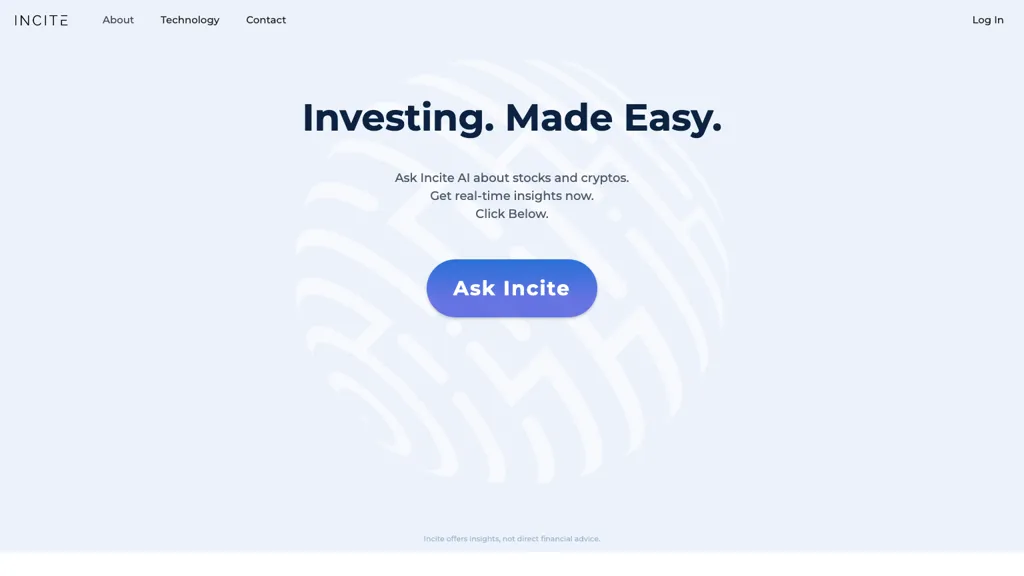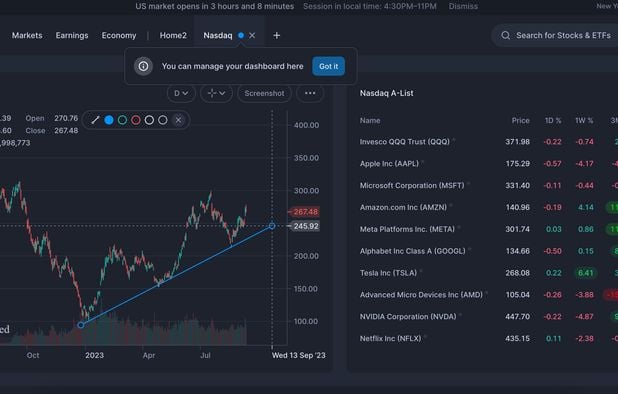20 Great Ideas To Choosing AI Stock Trading Analysis Websites
20 Great Ideas To Choosing AI Stock Trading Analysis Websites
Blog Article
Top 10 Ways To Assess Ai And Machine Learning Models For Ai Platform Analysis And Stock Prediction
To guarantee precise, reliable, and useful insights, it is crucial to examine the AI and machine-learning (ML) models employed by prediction and trading platforms. A poorly designed or overhyped model could result in financial losses as well as inaccurate forecasts. Here are the top ten suggestions to evaluate the AI/ML models used by these platforms:
1. The model's design and its purpose
It is crucial to determine the goal. Determine whether the model has been designed for long-term investing or for trading on a short-term basis.
Algorithm disclosure: Check if the platform discloses which algorithms it is using (e.g. neural networks and reinforcement learning).
Customization - Find out whether you are able to modify the model to suit your investment strategy and risk tolerance.
2. Evaluate model performance metrics
Accuracy: Examine the accuracy of the model's predictions and don't solely rely on this measure, since it could be misleading in financial markets.
Precision and recall: Evaluate whether the model is able to identify real positives (e.g. accurately forecasted price changes) and minimizes false positives.
Risk-adjusted Returns: Determine the model's predictions if they result in profitable trades taking risk into consideration (e.g. Sharpe or Sortino ratio).
3. Check your model by backtesting it
Performance historical: Test the model with historical data to determine how it will perform in previous market conditions.
Out-of-sample testing: Ensure the model is tested with the data it was not used to train on in order to avoid overfitting.
Scenario-based analysis: This entails testing the model's accuracy under different market conditions.
4. Make sure you check for overfitting
Overfitting Signs: Search for models that do exceptionally well when trained but poorly with untrained data.
Regularization: Find out if the platform uses regularization techniques like L1/L2 or dropouts to prevent excessive fitting.
Cross-validation. Ensure the platform performs cross-validation to assess the model's generalizability.
5. Assess Feature Engineering
Relevant features: Check whether the model is using meaningful features (e.g., price, volume and emotional indicators, sentiment data macroeconomic factors, etc.).
Selected features: Select only those features which are statistically significant. Beware of irrelevant or redundant data.
Dynamic feature updates: Check whether the model is able to adapt to changing market conditions or new features over time.
6. Evaluate Model Explainability
Model Interpretability: The model should give clear explanations of its predictions.
Black-box platforms: Be wary of platforms that employ excessively complex models (e.g. neural networks deep) without explainability tools.
User-friendly insights : Check whether the platform provides actionable information in a form that traders can use and comprehend.
7. Examining Model Adaptability
Changes in the market: Check that the model is able to adjust to changes in market conditions (e.g., new regulations, economic shifts or black swan instances).
Continuous learning: Make sure that the platform regularly updates the model by adding new data in order to improve performance.
Feedback loops: Ensure that the platform is incorporating feedback from users as well as real-world results to help refine the model.
8. Check for Bias Fairness, Fairness and Unfairness
Data bias: Ensure that the training data are accurate to the market and that they are not biased (e.g. overrepresentation in certain segments or time frames).
Model bias - Check to see if your platform actively monitors, and minimizes, biases in the model predictions.
Fairness: Ensure whether the model favors or disfavor specific types of stocks, trading styles, or segments.
9. Evaluation of the computational efficiency of computation
Speed: Test whether the model produces predictions in real time with the least latency.
Scalability - Make sure that the platform is able to handle large datasets, multiple users, and does not affect performance.
Resource utilization: Find out whether the model is using computational resources effectively.
10. Review Transparency and Accountability
Model documentation: Make sure that the model platform has comprehensive documentation on the model's design, the process of training as well as its drawbacks.
Third-party audits : Confirm that your model has been audited and validated independently by third-party auditors.
Error Handling: Check if the platform is equipped with mechanisms that detect and correct any errors in models or failures.
Bonus Tips
Case studies and user reviews User feedback is a great way to get a better understanding of how the model works in real-world scenarios.
Free trial period: Try the accuracy of the model and its predictability with a demo or free trial.
Customer support: Check that the platform can provide an extensive customer service to assist you solve any product or technical problems.
By following these tips you can assess the AI/ML models used by platforms for stock prediction and make sure that they are precise transparent and aligned with your goals in trading. See the top ai trading tips for more recommendations including ai for investment, chatgpt copyright, ai stock picker, ai stock, ai investment app, options ai, ai trade, trading ai, ai trading tools, ai stock market and more.
Top 10 Suggestions For Evaluating The Accuracy And Scalability Of Stock Trading Platforms Based On Ai
Scalability is a key element in determining whether AI-driven platforms for stock prediction and trading can handle increasing user demand, markets and data volumes. Here are 10 top strategies for evaluating scaling.
1. Evaluate Data Handling Capacity
Tips : Find out if the platform has the ability to process and analyze large datasets.
Why? Scalable platforms have to handle increasing data volumes without performance degradation.
2. Test Real-Time Processing Capabilities
See if your platform can handle real-time streams of data, like live stock quotes, or breaking news.
The reason: Inconsistent trading decisions could lead to missed opportunities.
3. Cloud Infrastructure Elasticity and Check
Tip: Find out whether the platform has the ability to dynamically scale resources and uses cloud infrastructure (e.g. AWS Cloud, Google Cloud, Azure).
Why cloud platforms are so popular: They provide flexibility, allowing systems to increase or decrease its size depending on the demand.
4. Algorithm Efficiency
Tip 1: Analyze the computational efficiency for the AI models that are being utilized (e.g. reinforcement learning deep learning, etc.).
The reason: Complex algorithms can be resource intensive, so optimizing these algorithms is essential to ensure scalability.
5. Examine Parallel and Distributed Computing
TIP: Check if the platform makes use of parallel processing and distributed computing frameworks.
The reason: These technologies enable quicker data processing and analytics across many nodes.
Review API Integration.
TIP: Test the platform's ability to interface with APIs that are external (e.g. brokerage APIs, market data providers APIs).
The reason: Seamless Integration guarantees that the platform will be able to adapt easily to new information sources, trading environments, and other factors.
7. Analyze User Load Handling
You can simulate user traffic and observe how the platform responds.
The reason: Scalable platforms must offer the same level of performance regardless of how many users are there.
8. Assess the model of Retraining and its Adaptability
Tip Assess how frequently the AI models can be trained on new data.
What's the reason? As markets shift and models are updated, they must be updated rapidly to remain precise.
9. Check for Fault tolerance and redundancy
Tips - Ensure that your platform is equipped with failover and redundancy mechanisms to handle hardware or software failures.
Why is downtime so costly for trading. So fault tolerance is crucial to the scalability.
10. Monitor Cost Efficiency
Tips: Calculate the costs of expanding your platform. Incorporate cloud resources, data storage and computational power.
The reason is that it should be at a price that is viable. This means that you must balance efficiency against cost.
Bonus Tip: Future-proofing
Make sure the platform incorporates new technologies (e.g. quantum computing or advanced NLP), and is able to adjust to changes in the regulatory environment.
These aspects can help you assess the scaleability of AI-based stock prediction as well as trading platforms. They'll also be sure that they are robust, efficient, ready for expansion, and are future-proof. Take a look at the recommended ai in stock market tips for site info including ai options, ai options trading, stock trading ai, free ai stock picker, ai stock trader, ai trading tool, ai stock analysis, ai options trading, ai options, how to use ai for stock trading and more.